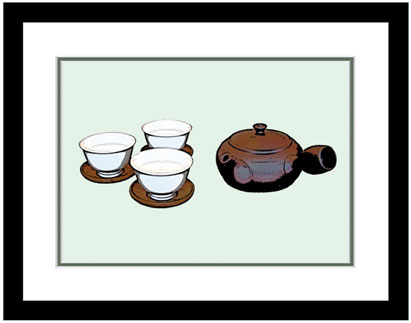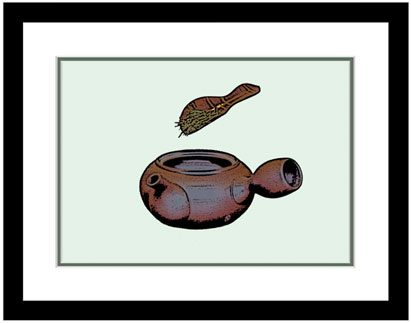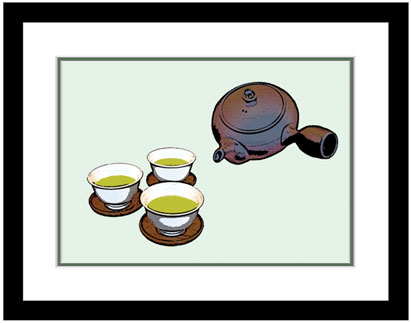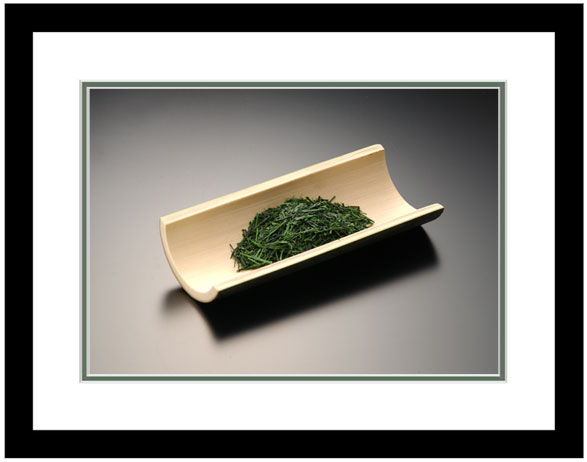How do I brew really good green tea? |
Do I need a special teapot? |
|||||
The secret to having really good green tea is all in the brewing as well as having some fairly good quality tea in the first place. I have noted some easy characteristics to look for when you choose your green teas so you can make your own selections with confidence. They are pretty straightforward and don't require you to be a tea master to follow so you can search out your own little gems. Below we give a simple guide on how best to brew your tea and get the most from your tea with minimal bitterness.
|
Ideally you would use a teapot with a little room for the leaves to interact with the water and some kind of filter to catch the loose leaves as you pour. This doesn't mean you can't use teaspoon infusers or teabags, you just might not be getting the most from your tea. I know it's not practical to always have a teapot with you, in fact this very problem is one of the main reasons we developed our powdered tea range. | |||||
 |
Step 1: Fill your empty teapot with boiling water. Once the teapot has warmed transfer the water into the cups you are going to use and allow to cool to 70-80 degrees celcius. Any excess water left in the pot discard. |
|||||
Why? You should never pour boiling water directly onto green tea leaves, it ultimately gives less flavour and more bitterness to your tea. The ideal water temp is 70-80 degrees. This means either boliing it and letting it cool for a few minutes or transferring the water between pot and cups (or even 2 mugs if you are not using a pot), which instantly drops the water temp and also warms your cups at the same time so you dont end up with luke warm tea. I must mention that you do actually need to boil the water. Just heating the water to the required temp without boiling does not work. But hopefully the above process is not too complicated and it means you don't have to wait around for water to cool. |
||||||
 |
Step 2: Put your tea leaves into the empty teapot and pour the water from the cups back into the teapot once they have reached the required temperature. As a rough guide, one heaped teaspoon of tealeaf should be enough for a pot making 2 or 3 medium sized cups. Gently swirl the teapot allowing the leaves to interact with the water. Do this for approximately 30 sec to 1 min and no longer. |
|||||
Why? Swirling the tea helps the leaves to release their flavour as quickly as possible. The longer you brew your tea the more bitter it will become. This is why allowing your tea to sit in a mug for 5 mins will often give you really bitter tea. A good quality tea leaf will release its flavour quickly meaning you can avoid stewing the tea and making it really bitter. |
||||||
 |
Step 3: Start to pour the tea from the teapot. If you have more than 1 cup it is important to pour gradually from cup to cup evenly distributing the tea between them. Finally make sure you drain all of the tea from the pot, even those last few drops. |
|||||
Why? As you pour the tea from the pot you will notice that it gets progressively stronger in colour; It is also getting progressively stronger in flavour which, is why it's important to evenly distribute the tea between cups. Otherwise you end up with one cup of really weak tea and one really strong one. This means that the last few drops in the pot are also the bits with the most flavour so make sure you drain every last one! As a side note, looking back at step one, if you discard the excess water in the pot after initially trasferring into the cups it will mean you have the perfect amount of tea in the pot for the cups you are using and you can enjoy every last drop of tea. Perfect. |
||||||
How do you spot a high quality Japanese green tea? |
||||||
 |
||||||
Aroma: Quality green tea has an amazing aroma; it is very fresh and has a very distinctive, almost sweet smell. Generally speaking the stronger and more distinctive this smell, the more flavoursome the tea is likely to be. It is a very good indicator of the quality of the tea. In fact you may like to try heating the dry leaf using an aroma heater of some sort; stricktly speaking this isn't an indicator of tea quality but you will be pleasently surprised by the results. |
Taste the dry leaf: This may seem like a strange thing to do, but if you put some of the dry tea leaf in your mouth and slowly chew the leaf you can actually get a very good idea of how the tea will taste. Old leaves or poor quality leaves will have very little flavour at all, almost tasteless in some cases. A good quality tea leaf will expand into a multitude of flavours in your mouth, making it a good indicator of the quality of the green tea you will be able to brew from it. |
|||||
Use by date: Green tea should be regarded like a fresh produce. Although dry green tea will not rot, or go bad for a very long time, it still has a relatively short 'fresh' period during which its flavour will be most distinctive. In fact if stored in poor conditions, Japanese green tea will lose much of its flavour in just a few weeks. Generally speaking, unless stored in special conditons high quality Japanese green tea will last for about a year. Beware of Japanese green teas that have 'long' shelf lives, i.e. 2 to 3 years. |
Brewing time: As mentioned previously, never use boiling water directly on Japanese green tea or brew the leaves for too long. Both these things will increase the bitterness in your tea. Boiled water should be cooled slightly and the leaves should not be brewed ideally for longer than a minute at the most. If a Japanese green tea needs boiling water poured directly onto it or a brewing time of 2 to 3 minutes then the chances are that the quality of the tea is not that great. |
|||||
Storing Japanese green tea: There are 3 main enemies for green tea, heat, light and exposure to air. All three will contribute to the deterioration of the flavour of your tea. Green tea leaves will also absorb strong odours, so if you are not storing your tea in an airtight container, beware of placing the tea near other strong smelling foods. Genreally speaking, keeping the tea in a non transparent container that is airtight and not in direct sunlight is a good place to start. If you have yet to open your tea packet, the best thing to do is actually stick your tea in the freezer, although only if the tea is still sealed in it's foil container. |
||||||